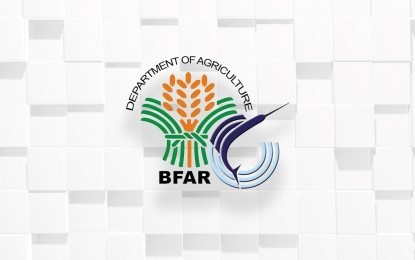
MANILA – The Department of Agriculture’s Bureau of Fisheries and Aquatic Resources has implemented the Integrated Marine Environment Monitoring System (IMEMS) Project, aiming to enhance the government’s capability in the monitoring, control, and surveillance system over its maritime domain while intensifying the campaign against illegal, unreported, and unregulated (IUU) fishing.
The IMEMS project is an innovative, optimized, and integrated monitoring system that expands and improves the DA-BFAR’s current program.
With the IMEMS project, the DA-BFAR can now track and communicate with Philippine-flagged fishing vessels in real-time on a national scale, integrating communication, licensing, and law enforcement functionalities to ensure compliance with various conservation and management measures being implemented in Philippine waters, exclusive economic zones (EEZ), and other coastal states.
“Implementing IMEMS project gives us the opportunity to benefit from technological innovations for a more improved fisheries management practices while empowering our fishers to become responsible resource users”, said Agriculture Undersecretary for Agri-Industrialization and for Fisheries Cheryl Natividad-Caballero.
The project is part of Agriculture Secretary William Dar’s key strategies to level up the development in the agriculture and fishery sector dubbed the “One DA Approach,” which seeks to harness Information and Communications Technology (ICT)–enabled advisory services and vessel monitoring system to effectively connect farmers and fisherfolk in the regional and global value-chain, Caballero added.
Under the new project, the DA-BFAR is currently constructing six of the 15 Port and Costal Monitoring System-Type 1 (PCMS-Type 1) towers and has installed 25 of 117 coast stations (PCMS-Type 2) in identified sites across the country.
These control towers and coastal monitoring devices are set to feed real-time data on commercial fishing vessel activities to the Bureau’s National Data Center in Navotas City, now operational since March 2020.
The National Data Center will be in charge of data processing and analytics, including integrated vessel tracking, license management, Enhancing Local Government Operations through e-Governance (E-LOG), and automated detection of illegal, unreported, and unregulated activities.
The system also collects relevant oceanographic, meteorological, and fish catch data that can be used for quick response, disaster recovery, scientific research, and climate change mitigation measures.
Using a low-cost technology that combines terrestrial and satellite systems on vessel data collection, the IMEMS ensures that the data gathered from fishing vessels are secured using up-to-date encryption technology and are made accessible to DA-BFAR partners to ensure data transparency.
Over 491 Philippine-flagged commercial fishing vessels are now installed with Vessel Monitoring System transceivers (VMS-100), in compliance with the Fisheries Administrative Order (FAO) 266, or the Rules and Regulations on the Implementation of Vessel Monitoring Measures (VMM) and the Electronic Reporting System (ERS) for Commercial Philippine Flagged Fishing Vessels Amending FAO 260 Series of 2018, the fisheries policy that supports the implementation of the IMEMS project.
Under the newly amended FAO 266, all commercial fishing vessels with more than 3.1 gross tonnages, operating in domestic waters, in the High Seas, and other distant waters are now required to install VMS-100 transceivers in their vessels.
Of the 491 Philippine-flagged vessels with newly installed VMS-100, 362 are commercial fishing vessels deployed in domestic waters, while 117 are fishing in High Seas Pocket 1 (HSP1) delineated by the Western and Central Pacific Fisheries Commission (WCPFC). The remaining 12 VMS-100 are installed in the DA-BFAR’s floating assets.
The DA-BFAR targets to install around 5,000 Vessel Monitoring Systems in commercial fishing vessels by the end of 2021. (PR)
